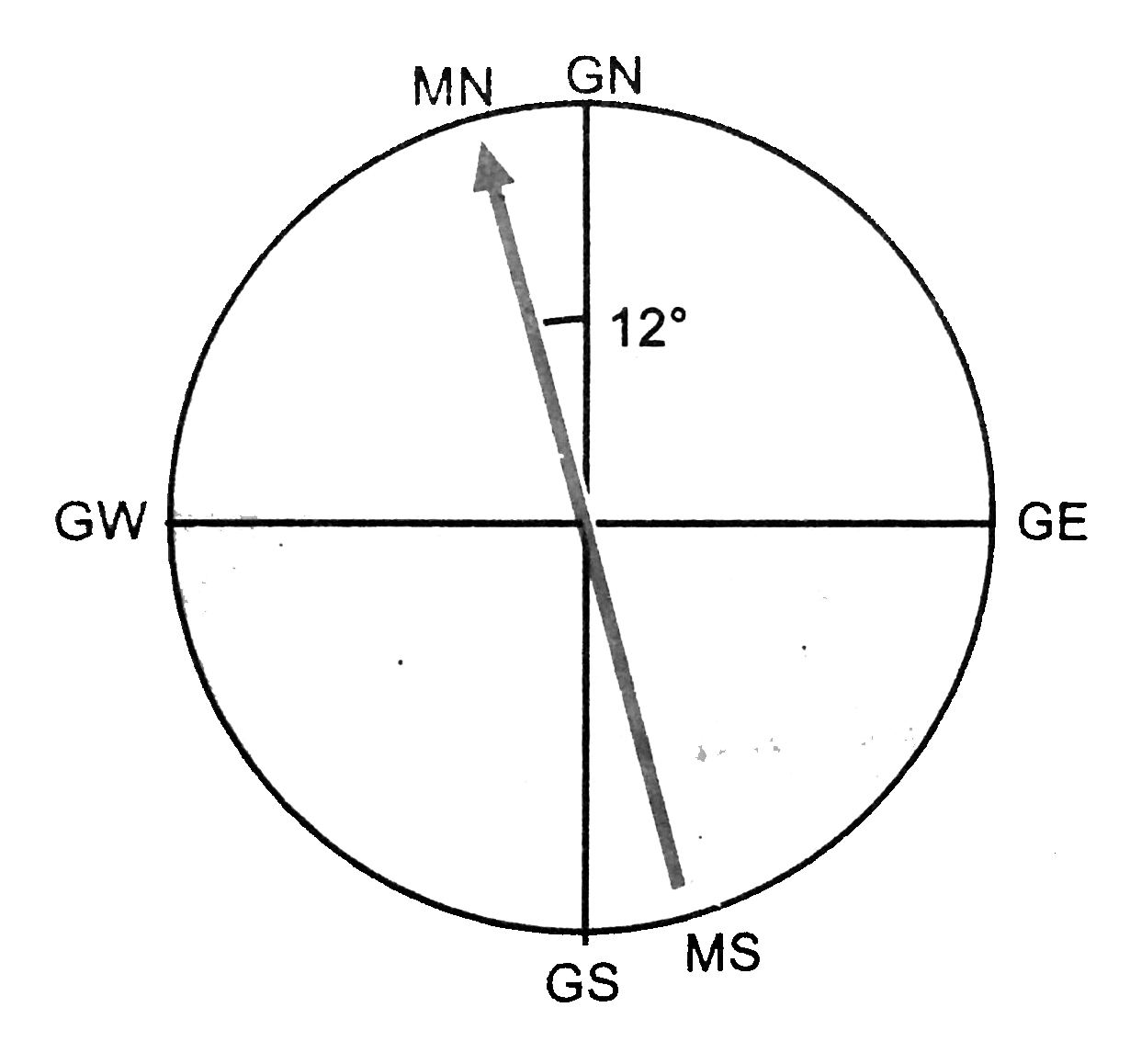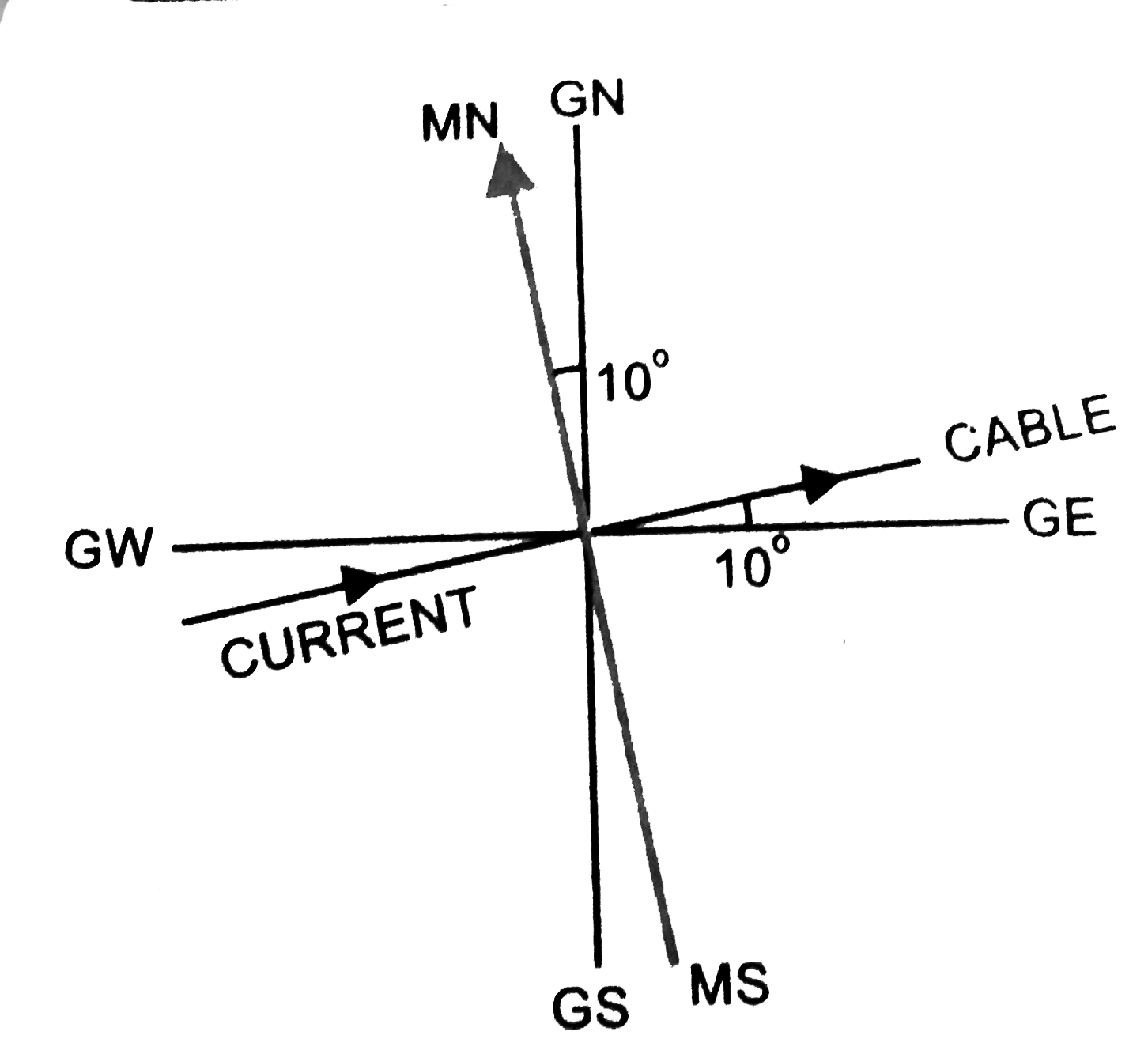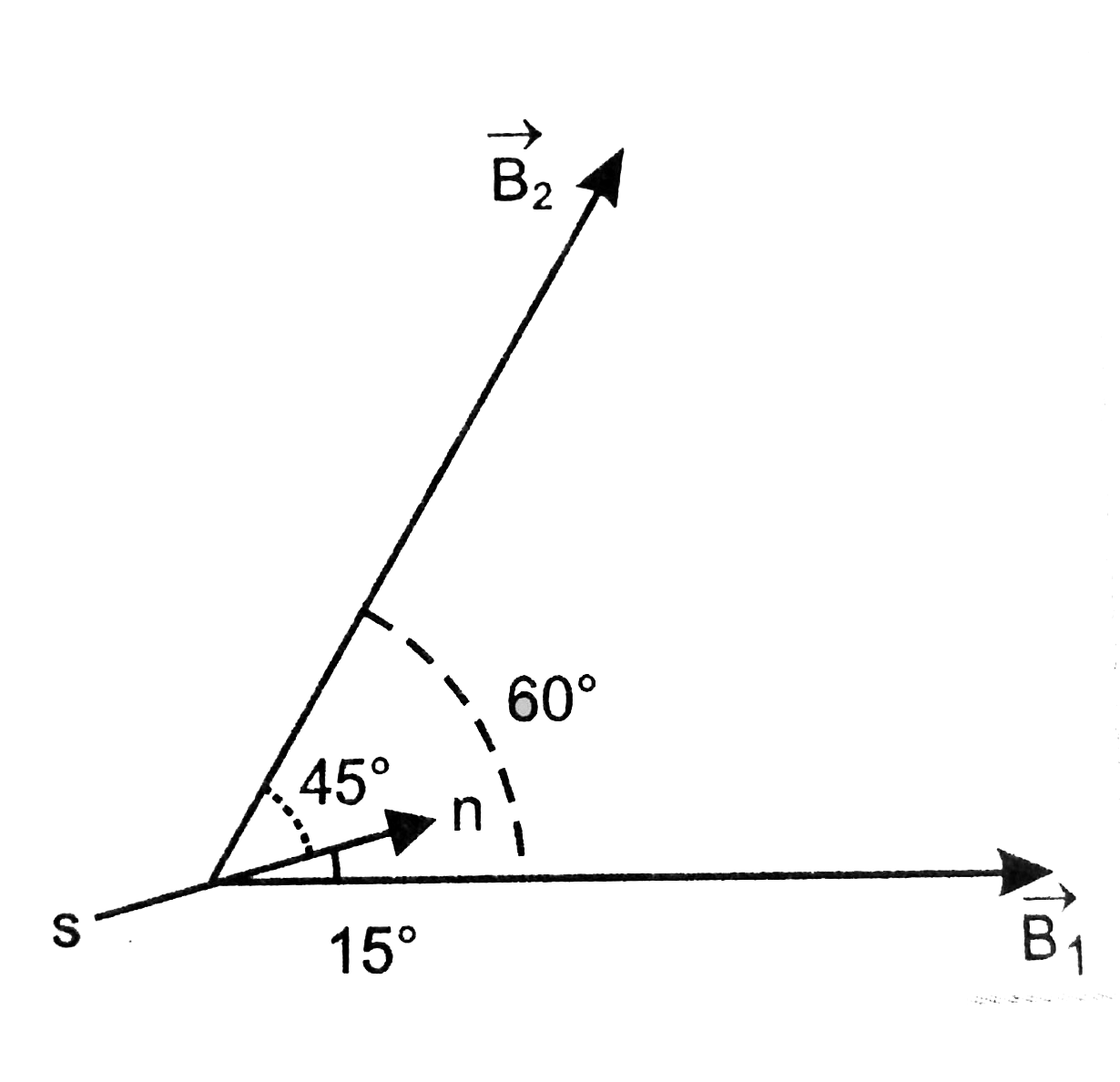Exercise from NCERT PHYSICS Chapter 9 MAGNETISM AND MATTER for Class 12
| Class 12 | PHYSICS |
| Chapter | MAGNETISM AND MATTER |
| NCERT PHYSICS | Exercise |
| Medium | English |
| Academic Year | 2023-2024 |
Question 1
Answer the following questions regarding earth's magnetism.
(a) A vector needs three quantities for its specification. name the three independent quantities conventionally used to specify the earth's magnetic field.
(b) The angle of dip at a location in southern india is about 18∘. Would you expect a greater or lesser dip angle in Britain?
(c) If you made a map of magnetic field lines at Melbourne in Australia, would the lines seem to go into the ground or come out of the ground?
(d) Which direction would a compass needle point to, if located right on the geomagnetic north or south pole?
(e) The earth's field, it is claimed, roughly approximates the field due to a dipole of magnetic moment 8×1022JT−1 located at its centre. Check the order of magnitude of this number in some way.
(f) Geologists claim that besides the main magnetic n-s poles, there are several local poles on the earth's surface oriented in different directions. How is such a thing possible at all?View SolutionQuestion 2
Answer the following questions: (a) The earth's magnetic field varies from point to point in space.
Does is also change with time? If so, on what time scale does it change appreciably?
(b) The earth's corei s known to contain iron. Yet geologists do not regard this as a source of earth's magnetism, why?
(c) The charged currents in the outer conducting regions of earth's core are thought to be possible for earth's magnetism. What might be the battery to sustain these currents?
(d) The earth may have even reversed the direction of its field several times during its history of 4 to 5 billion years. How can geologits know about the earth's field in such distant past?
(e) The earth's field departs from its dipole shape substantially at large distances (greater than about 30000km). What agencies may be responsible for this distortion?
(f) Interstellar space has an extremely weak magnetic field of the order of 10−12T. Can such a weak field be of any significant consequence? Explain.View SolutionQuestion 4
A short bar magnet of moment 0⋅32JT−1 is placed in a uniform external magnetic field of 0⋅15T, if the bar is free to rotate in the plane of the field, which orientations would correspond to its, (i) stable and (ii) unstable equilibrium? What is the potential energy of the magnet in each case? View SolutionQuestion 7
A bar magnet of magnetic moment 1.5JT−1 lies aligned with the direction of a uniform magnetic field of 0.22T.
(a) What is the amount of work done to turn the magnet so as to align its mangetic moment
(i) normal to the field direction, (ii) opposite to the field direction?
(b) What is the torque on the magnet in cases (i) and (ii)?View SolutionQuestion 8
A closely wound solenoid of 2000 turns and area of cross section 1.6×10−4m2, carrying a current of 4amp. is suspended through its centre allowing it to turn in a horizontal plane:
(a) What is the magnetic moment associated with the solenoid?
(b) What are the force and torque on the solenoid if a uniform horizontal magnetic field of 7⋅5×10−2T is set up at an angle of 30∘ with the axis of the solenoid?View SolutionQuestion 9
A circular coil of 16 turns and radius 10cm carrying a current of 0.75A rests with its plane normal to an external field of magnitude 5⋅0×10−2T. The coil is free to turn about an axis in its plane perpendicular to the field direction. When the coil is turned slightly and released, it oscillates about its stable equilibrium with a frequency of 2⋅0s−1. What is the moment of inertia of the coil about its axis of rotation?View SolutionQuestion 10
A magnetic needle free to rotate in a vertical plane parallel to the magnetic meridian has its north tip pointing down at 22∘ with the horizontal. The horizontal component of the earth's magnetic field at the place is known to be 0⋅35G. Determine the strength of the earth's magnetic field at the place.View SolutionQuestion 11
At a certain location in Africa, compass points 12∘ west of geographic north, figure. The north tip of magnetic needle of a dip circle placed in the plane of magnetic meridian points 60∘ above the horizontal. The horizontal component of earth's field is measured to be 0.16gauss. Specify the direction and magnitude of the earth's field at the location.
 View Solution
View SolutionQuestion 13
A short bar magnet placed in a horizontal plane has its axis aligned along the magnetic north south direction. Null points are found on the axis of the magnet at 14cm from the centre of the magnet. The earth's magnetic field at the plane is 0⋅36G and the angle of dip is zero. What is the total magnetic field on the normal bisector of the magnet at the same distance as the null points (i.e. 14 cm) from the centre of the magnet? (At null points, field due to a magnet is equal and apposite to the horizontal component of earth's magnetic field).View SolutionQuestion 15
A short bar magnet of mangetic moment 5⋅25×10−2JT−1 is placed with its axis perpendicular to earth's field direction. At what distance from the centre of the magnet, is the resultant field inclined at 45∘ with earth's field on (i) its normal bisector, (ii) its aixs? Magnitude of earth's field at the place 0⋅42G. Ignore the length of the magnet in comparison to the distances involved.View SolutionQuestion 16
Answer the following questions:
(a) Why does a paramagnetic sample display greater magnetisation (for the same magnetising field) when cooled.
(b) Why is diamagnetism, in contrast, almost independent of temperature?
(c) If a toroid uses bismuth for its core, will the field in the core be (slightly) greater or (slightly) less than when the core is empty?
(d) Is the permeabililty of a ferromagnetic material independent of the magnetic field? If not, is it more for lower or higher fields?
(e) Magnetic field lines are always nearly normal to the surface of a ferromagnet at every point (This fact is analogous to the static electric field lines being normal to the surface of a conductor at every point). Why?
(f) Would the maximum possible magnetisation of a paramagnetic sample be of the same order of magnitude as the magnetisation of a ferromagnet?View SolutionQuestion 17
Answer the following question: (a) Explain qualitatively on the basis of domain picture, the irreversibility in the magnetisation curve of a ferromagnet.
(b) The hysteresis loop of a soft iron piece has a much smaller area than that of a carbon steel piece. If the material is to go through repeated cycles of magnetisation, which piece will dissipate greater heat energy?
(c) A system displaying a hysteresis loop such as ferromagnet is a device for strong memory? Explain the meaning of this statement.
(d) What kind of ferromagnet material is used for coating magnetic tapes in a cassette player, or for building memory stores in a modern computer?
(e) A certain region of space is to be shielded from magnetic fields. Suggest a method.View SolutionQuestion 18
A long straight horizontal cable carries a current of 2.5amp. In the direction 10∘ south of west to 10∘ north of east, figure. The magnetic meridian of the place happens to be 10∘ west of the geographic meridian. The earth's magnetic field at the location is 0.33G and the angle of dip is zero. Locate the line of neutral points (Ignore the thickness of the cable). [At neutral points, magnetic fied due to a current cable is equal and opposite to the horizontal component of earth's magnetic field.]
 View Solution
View SolutionQuestion 19
A telephonic cable at a place has four long straight horizontal wires carrying a current of 1.0amp. in the same direction east to west. The earth's magnetic field at the place is 0.39G and the angle of dip is 35∘. The magnetic declination is almost zero. What are the resultant magnetic fields at points 4.0cm below and above the cable?View SolutionQuestion 20
A compass needle free to turn in a horizontal plane is placed at the centre of a circular coil of 30 turns and radius 12 cm. The coil is in a vertical plane making an angle of 45∘ with the magnetic meridian when the current in the coil is 0.35amp., the needle points west to east.
(a) Determine the horizontal component of earth's magnetic field at the location.
(b) The current in the coil is reversed and the coil is rotated about its vertical axis by an angle of 90∘ in the anticlockwise sense looking from above. Predict the direction of the needle. Take the magnetic declination at the places to be zero.View SolutionQuestion 21
A magnetic dipole is under the influence of two magnetic fields. The angle between the field directions is 60∘ and one of the fields has a magnitude of 1⋅2×10−2 tesla. If the dipole comes to stable equilibrium at an angle of 15∘ with this field, figure, what is the magnitude of the other field?
 View Solution
View SolutionQuestion 22
A monoenergetic (18 keV) electron beam initially in the horizontal direction is subjected to a horizontal magnetic field of 0.04 G normal to the initial direction. Estimate the up or down deflection of the beam over a distance of 30 cm (me =9.11×10–31kg). [Note: Data in this exercise are so chosen that the answer will give you an idea of the effect of earth’s magnetic field on the motion of the electron beam from the electron gun to the screen in a TV set.]View SolutionQuestion 23
A sample of paramagnetic salt contains 2×1024 atomic dipoles, each of moment 1.5×10−23JT−1. The sample is placed under a homogeneous magnetic field of 0.64T and cooled to a temperature of 4.2K. The degree of magnetic saturation archieved is equal to 15%. What is the total dipole moment of the sample for a mangetic field of 0.98T and a temperature of 2.8K. (Assume Curie's law).View SolutionQuestion 25
The magnetic moment vectors →μs and →μl associated with the intrinsic spin angular momentum →S and orbital angular momentum →l respectively, of an electron are predicted by quantum theory (and verified experimentally to a high accuracy to be given by
→μs=−(em)→S and →μl=−(e2m)→l
Which of these relations is in accordance with the result expected classically? Outline the derivation of the classical result. View Solution
